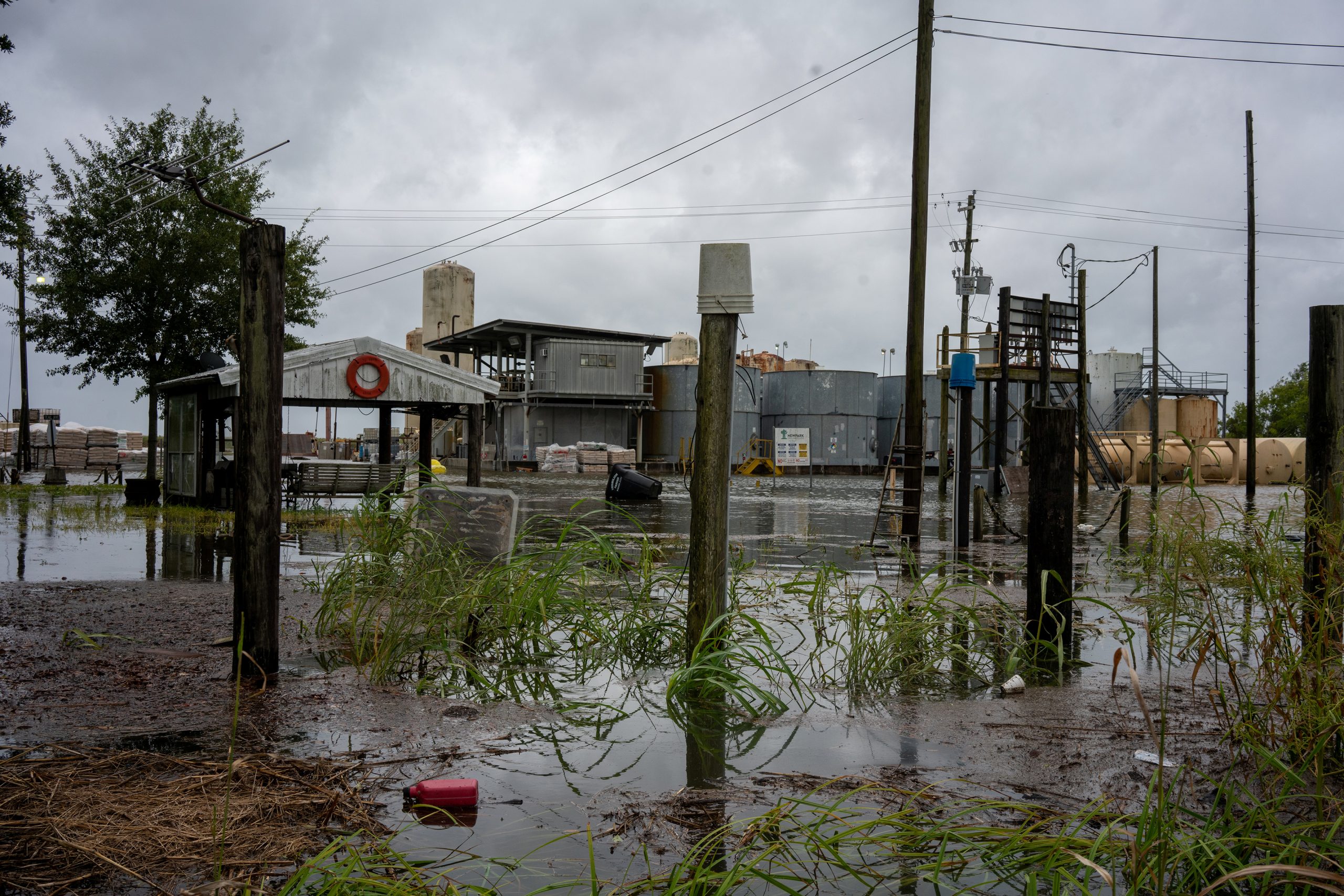Hurricane Laura ripped through southwestern Louisiana on Thursday, destroying buildings in the city of Lake Charles and killing a 14-year-old girl after making landfall in the early morning as one of the most powerful storms to hit the state.
The hurricane’s first reported U.S. fatality was a 14-year-old girl in Leesville, Louisiana, who died when a tree fell on her house, a spokeswoman for Governor John Bel Edwards said.
“We do expect that there could be more fatalities,” the spokeswoman, Christina Stephens, said on Twitter.
A chemical facility caught fire in Laura’s wake on Thursday morning in Westlake, Louisiana, 4 miles (6.4 km) west of Lake Charles, the Lake Charles Police Department said. Video footage on Twitter showed thick black smoke billowing into the sky over the wind-torn landscape near Interstate 10.
The Westlake police were still investigating the incident on Thursday morning, a representative said by phone, and authorities were blocking traffic on the interstate and Highway 90 in the meantime.
Residents of Lake Charles heard Laura’s winds howling and the sound of breaking glass as the storm passed through the city of 78,000 with winds of 85 miles per hour (137 km per hour) and gusts up to 128 mph (206 kph) in the hour after landfall.
The windows of the city’s 22-floor Capital One Tower were blown out, street signs were toppled and pieces of wooden fence and debris from collapsed buildings lay scattered in the flooded streets, video footage on Twitter and Snapchat showed.
Lake Charles resident Borden Wilson, a 33-year-old pediatrician, was anxiously anticipating his return home after evacuating to Minden, Louisiana.
“I never even boarded up my windows. I didn’t think to do that. This is the first hurricane I’ve experienced. I just hope my house is fine,” he told Reuters in a telephone interview.
Laura made landfall just before 1 a.m. as a Category 4 storm packing winds of 150 mph (240 kph) in the small town of Cameron, Louisiana, the National Hurricane Center (NHC) said.
It rapidly weakened to a Category 1 storm on Thursday morning with maximum sustained winds of 75 mph (120 kph), and was forecast to become a tropical storm later in the day.
The NHC warned that high water levels would persist along the Gulf Coast for several hours as Laura moved north and then northeast.
Besides threatening life, the storm slammed the heart of the U.S. oil industry, forcing oil rigs and refineries to shut down production.
The Port of Lake Charles remained closed as workers were unable to enter or exit the facility due to downed power lines and trees.
The port avoided significant flooding but power was out as of Thursday morning, manager of security and safety Ed Manint said. The harbor police were assessing the damage, he said.
‘LESS SURGE THAN WE THOUGHT’
Federal Emergency Management Agency (FEMA) Administrator Pete Gaynor told Fox News that the agency would make storm damage assessments on Thursday and had the resources to respond to the storm now, adding he expected to see significant damage from wind and building damage.
“I think we’re generally fortunate – less surge than we thought,” Gaynor said.
The NHC on Wednesday predicted storm surge would be “unsurvivable” and could penetrate up to 40 miles inland. While the worst projections had not materialized, damaging winds and flooding rainfall would continue spreading inland later on Thursday, the NHC said.
Laura could spawn tornadoes on Thursday over Louisiana, Arkansas and western Mississippi, and was expected to drop 4 to 8 inches of rain (101 to 203 mm) across portions of that region, the NHC said.
The eastern coastal counties of Texas that had braced for the worst were largely spared Laura’s rage. Galveston’s acting mayor, Craig Brown, told MSNBC he was canceling the island city’s evacuation on Thursday after the storm turned more toward Louisiana and was offering emergency support to communities hit harder to the east. The mayor of Beaumont, Texas, Becky Ames, told MSNBC the situation was “manageable.”
Around 650,000 homes and businesses in Louisiana and Texas were without power early Thursday, and local utilities in the storm’s path warned outage numbers would climb as the storm marched inland.
Texas Governor Greg Abbott was planning to travel to east Texas to survey the damage on Thursday, his spokesman said.
U.S. President Donald Trump was scheduled to visit FEMA’s headquarters shortly after 1 p.m. EDT to receive a briefing on the hurricane.
(Reporting by Ernest Scheyder in Beaumont, Tex., Jennifer Hiller and Gary McWilliams in Houston, Liz Hampton in Denver, Timothy Ahmann, Susan Heavey and Daphne Psaledakis in Washington; Gabriella Borter in New York and Brad Brooks in Lubbock, Tex.; Writing by Gabriella Borter; Editing by Bernadette Baum and Matthew Lewis)

























 Continue with Google
Continue with Google